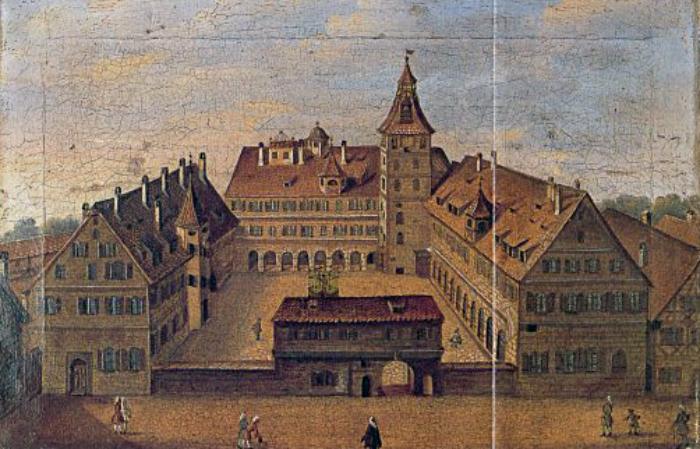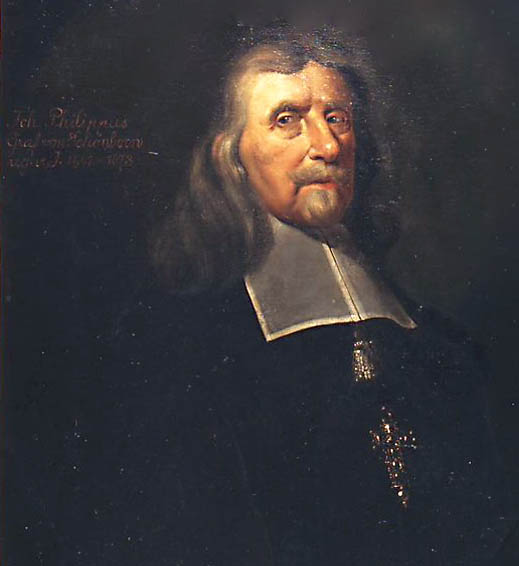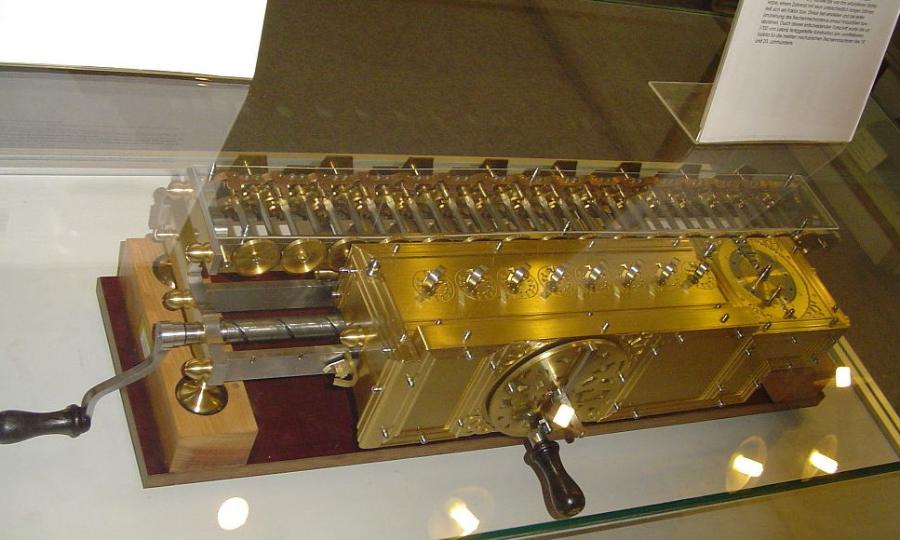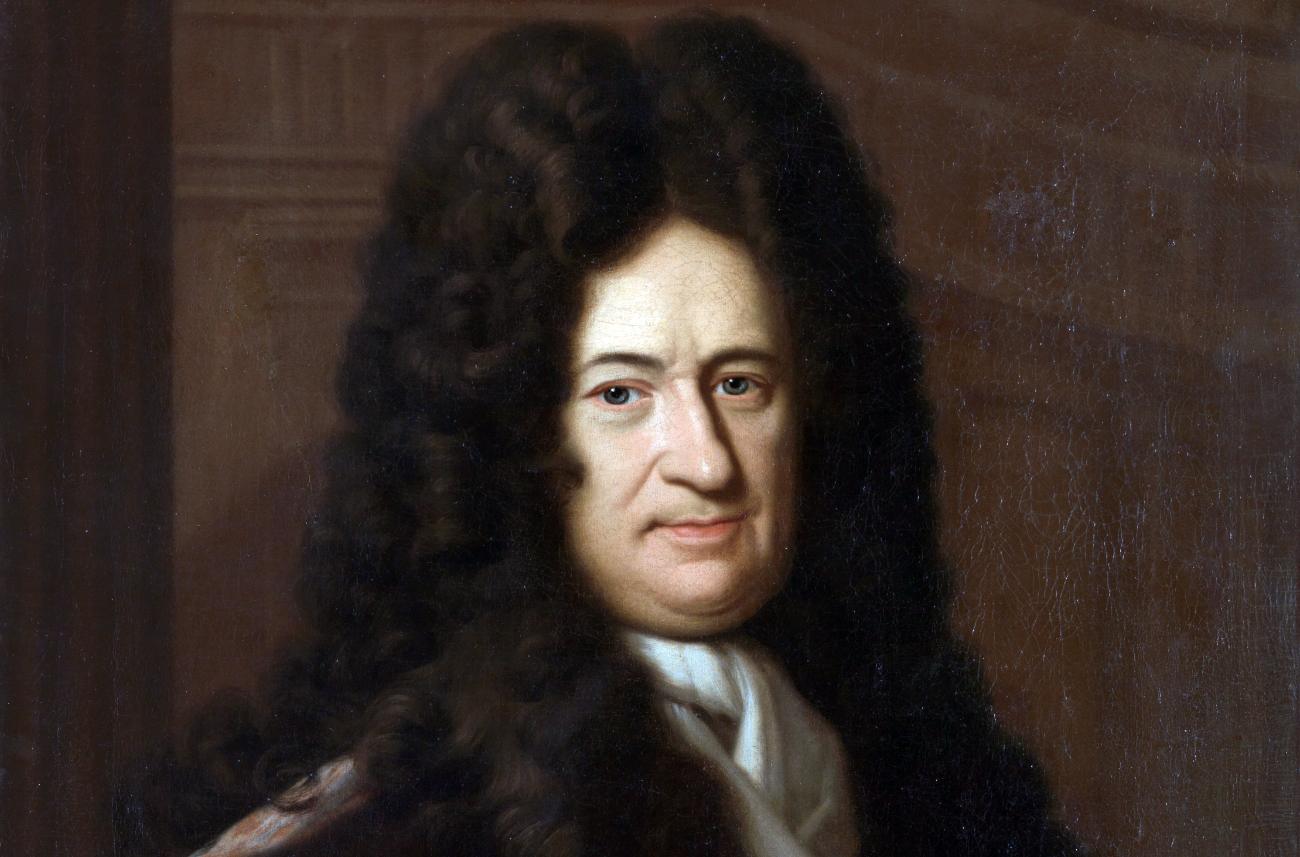Although the Thirty Years’ War ended two years before Gottfried Wilhelm Leibniz was born (1646-1716), he is often regarded as the last universal genius. He excelled as a philosopher, theologian, lawyer, mathematician, historian, inventor, and politician, and was widely considered the most brilliant intellect of his day, in large part because he was interested in every field of study.
The polymath dedicated his life to bettering society and the planet. This drive, along with his lifelong fascination with mathematics, led to many of his ideas and discoveries, including the binary number system and infinitesimal calculus, upon which contemporary computers are built.
Gottfried Leibniz conceived of science as a whole. He spent his whole life trying to piece together a coherent theory that would allow him to make sense of the universe. He was a genius in every sense of the word, thanks to his boundless curiosity and exceptional intellect. He is quoted as saying, “When I wake up in the morning I have got so many ideas in my head that the day is not long enough to write them all down.”
An affluent upbringing
Born from a family of academics on July 1, 1646, Gottfried Wilhelm Leibniz went on to become a prominent thinker in his own right. His mother was the daughter of a professor, while his father was a notary and law professor at Leipzig University. At the young age of seven, he was able to take advantage of his family’s good socioeconomic status by enrolling at the prestigious Nikolai School in Leipzig. This is because it would be quite some time before going to school is mandatory.
Not only that, but the young Leibniz had access to his father’s library in an era when literacy was not a given for youngsters. The dormant talent may be roused and fostered here at a young age. So, at the tender age of eight, he studies his father’s philosophical treatises and Latin texts with pleasure and teaches himself Latin from books.
By learning Latin as a young boy, he becomes fluent in the language of science at the time and lays the groundwork for future excellence in scholarly communication and scientific achievement.
Insatiable need for knowledge

At 15, his insatiable need for knowledge drove him to enroll in philosophy classes at Leipzig University, where he also took courses in mathematics and the classics of Greek and Latin poetry. Leibniz, at the same time, investigated logical puzzles and the laws of physics. After just two years, he had finished his education and was fully committed to the practice of law. Despite his many accomplishments, he was not awarded a doctorate in canon or civil law because of his youth.
At the age of twenty, he was transferred to the University of Nuremberg’s satellite campus in Altdorf. Here he handed in a finished copy of his doctoral thesis, titled “Disputation on Difficult Cases in Law” (Disputatio de casibus perplexis in jure) which was so successful that he was offered a professorship.
An early Enlightenment figure
In his thesis, Leibniz analyzes methods for resolving complex legal disputes for which the law at the time had no obvious answers. He suggests that the judge may simply refuse to rule, toss a coin, or use common sense or basic ethical standards.
Invoking the so-called natural law, which sees morality as the foundation for law and order and which, according to Leibniz, was insufficiently addressed in the law of the period owing to the prevalent structure of governance, Leibniz advocates for the latter alternative.
Different from other naturalists, Gottfried Leibniz believed that God gave us reason to help us understand the moral underpinnings of the law. So, he was ahead of his time in advocating reason-driven action, even at a young age, and far before the commencement of the Enlightenment.
“Theoria cum praxi”
Leibniz, after completing his exceptional doctorate, was offered two professorships, both of which he unexpectedly turned down. Taking to heart the words of his personal motto, “Theoria cum praxi,” he sought to combine theory with practice and entered the workforce. He sought to better the world by gaining the trust of the powerful so that he could widen his views, make scientific progress, and advance his career.
He studied a wide variety of disciplines, including philosophy, religion, and the natural sciences, and came to the conclusion that the only way to integrate knowledge is to find the truth in the midst of the many divergent perspectives that exist. He did not want to take the position in order to continue working toward this objective and to engage extensively with other scientific perspectives.
The groundwork for Leibniz’s success
The significance of his subsequent accomplishments was unrelated to his first position. Leibniz took a position with a Nuremberg group that did covert alchemical experiments after lying about his understanding of the subject. He took on the roles of laboratory assistant and secretary. Later on, he even saw condescending while discussing the dubious tests, but back then, he needed the cash badly.
The gamble of rejecting a professorship, however, paid off for Gottfried Leibniz: In the year after he earned his doctorate, he met Baron Johann Christian von Boyneburg, who would become his patron and companion. As a minister and ambassador to the influential Elector and Archbishop of Mainz, Johann Philipp von Schönborn, he was instrumental in securing a post for Leibniz in the latter’s court.

Being Boyneburg’s personal adviser and lawyer provides Leibniz with the time and resources to tackle a wide range of pressing problems. He published a number of treatises that addressed issues of faith as well as philosophy, physics, mathematics, and history.
By writing to the most eminent academics of his day, he hoped to build a lasting network for future idea exchange. By the time of his death, the scholar communicated with 1,300 other brilliant minds and made connections with people as far afield as China.
Renowned for his out-of-the-box thinking
Visiting Paris, then Europe’s epicenter of science and learning, had a profound impact on Gottfried Leibniz. After spending two years at the court of the Elector of Mainz, he was sent there in an effort to keep Louis XIV from sparking a conflict that might engulf all of Europe.
Despite his failure, Leibniz’s four years in Paris were some of the most creative and productive of his life. Here he was able to network with prominent academics from across the world, get entry to exclusive scientific communities, and stay abreast of developments in all areas of research. By expanding his horizons beyond what he learned in college, he could take part in cutting-edge scientific inquiry.
Number-based arithmetic

In Paris, Gottfried Leibniz also followed his ardent interest in mathematics to create a system that is still widely used today: the binary number system. According to Leibniz, because God created everything from nothing, this could be expressed using just two digits: zero for emptiness and one for God.
Now he could express any number with only these two digits. In his binary system, Leibniz saw the trinity of God in the numerical sequence 111, which meant the number 7, the days of creation. Leibniz argued that the binary system was “the most fundamental thing in science” and demonstrated that calculations could be performed with binary numbers in the same manner as with our decimal system.
The binary system is the foundation of modern electrical computers today. Having just two possible states makes the binary system an ideal choice of logic. It can be categorized as either “on” or “off,” “current flows” or “current does not flow,” or “true” or “false.” This means that algorithms can be used to encode data using binary numbers; without them, computers, as we know them today, would not exist.
A precursor to modern computing

In addition to developing the concept of binary numbers, Gottfried Leibniz also created the first mechanical calculating machine called “stepped reckoner” capable of performing the four fundamental arithmetic operations. The gears could be changed in such a manner that, depending on the direction of motion, addition or subtraction could take place, with the result being read off on little discs. The fundamental idea behind this invention is still used in mechanical calculating machines today. The division is accomplished by repeatedly subtracting the same amount, while multiplication is accomplished by adding together numerous times.
Unlike modern electronic calculators, however, this initial “calculator” could only operate in the decimal system. Despite Leibniz’s proposals and illustrations, the delicate mechanical execution caused this machine to fail.
Progress in the realm of higher mathematics
After a year and a half in Paris, the polymath takes a brief trip to London, another great intellectual center of the world. Here, he showed the Royal Society a prototype of his calculating machine and, only three months later, was invited to join the organization. There, he was exposed to cutting-edge developments in physics and mathematics thanks to the scientists who worked with Isaac Newton.
Once back in Paris, Leibniz was able to go further into his mathematical thoughts, and two years later, he invented the infinitesimal calculus, simultaneously with Newton but independently of him. It’s the biggest mathematical achievement he’s had thus far. Slopes of curves and curvilinear surface areas could now be determined with the use of differential and integral calculus. These foundational concepts of advanced mathematics remain an essential element of any modern mathematics curriculum today.
Because of the sudden deaths of his patrons, Boyneburg and the Elector of Mainz, Leibniz was forced to depart Paris a year later. For the next 40 years, Gottfried Leibniz would spend most of his time in Hanover, where he would work as a court counselor and librarian for Duke Johann Friedrich.
In defiance of adversity

Leibniz was at first encouraged by his new job to continue his research. The polymath created a gadget to measure wind speed, the principle of dowel, and blueprints for the first submarine, among many other innovations that received less recognition at the time.
Later on, though, Leibniz was given the green light to implement his novel approaches to mining in the Harz Mountains. To empty the tunnels, he developed a water pump run by windmills which was a pioneer design in wind power. In order to put the water to good use again, he pumped it to lakes at a higher elevation. In fact, this is still the guiding idea for modern pumped-storage power facilities. His invention of a circular, infinite chain originally used to move minerals has found several modern uses.
Unfortunately for Leibniz, a shortage of resources, inappropriate materials, and resistant miners prevented him from seeing his innovations through to widespread use. After Duke Johann Friedrich passed away, his successor severely limited Leibniz’s freedom to pursue his scientific interests. Leibniz was forced to give up his experiments in the Harz Mountains because Duke Ernst August did not share his enthusiasm for them.
Theologian, philosopher, and historian
In 1685, Leibniz was commissioned to write down the history of the Guelphs by his new employer, Duke Ernst August of Hanover, who insisted that the scholar undertake his responsibilities as a royal councilor instead of keep studying. Duke Ernst August was a member of the powerful and venerable Guelph family in Hanover. Guelph was a European dynasty spanned from the 11th through the 20th centuries. They produced many German and British monarchs, including Emperor Ivan VI of Russia.
Gottfried Leibniz, ever the detail-oriented perfectionist who never forgets his roots, kicks off this history with a lengthy discourse on the origin of life. It’s thus not shocking that he won’t ever complete the history, having only progressed to the year 1005 AD.
However, Leibniz published his intermediate findings and a comprehensive collection of references between 1701 and 1711, ensuring that the enormous achievement would not be lost after his death. Gottfried Leibniz owed his status as the forefather of scientific history to his emphasis on the significance of sources and how to deal with them. According to the expert, scientifically sound and verifiable historiography is only necessary when the sources are published, and only the proper management of such materials allows for the establishment of historical reality.
While doing research for his monumental Guelph history book, he visited Rome, where he was offered the position of Vatican library director. He declined the offer since he was a Protestant, but the next year he became director of the Duke August Library. Here, he earned immortality by developing the first-ever method for cataloging books. He pioneered the practice of classifying books according to their style, content, and letter of the alphabet. The process of locating a certain work was now streamlined and efficient.
Monadology
Gottfried Leibniz spent much time at Hanover engaged in one of his first areas of interest, philosophy. His theory of “monadology” is now one of the most well-known in this area. According to this theory, everything is made up of “monads.” All other components are created from these basic building blocks. This means that even the monad of an inanimate object like a stone has mental capabilities like perception.
Monads of inorganic substances, however, have the most hazy and, therefore, lowest kind of vision, according to Leibniz, who gives the clearest and, therefore, greatest form of perception to God. In addition to creating humans, God also made the monads and programmed them with all of their potential outcomes. According to Leibniz, the universe was designed to be in perfect harmony from the start. He calls this “pre-stabilized harmony.”
This is how the scholar described the issues of “metaphysics,” the branch of philosophy that deals with things outside the realm of physics and the sensory experiences they provide. In particular, Leibniz solves the so-called “body-soul dilemma” with the monads, which ask why the body reacts to something that can only be thought about. Leibniz argued that God designed humans so that our bodily and mental processes may operate in perfect harmony with one another, thanks to the pre-stabilized harmony of the monads.
Of course, such thinking is hopelessly out of date at this point in time. Nonetheless, his ideas continue to inspire other thinkers and are often regarded as forerunners to current philosophical conceptions.
Best of both worlds
Later in life, Gottfried Leibniz released another book that was both philosophical and religious; it explored the problem of reconciling the existence of evil with God’s goodness and might. By giving his book the title “Theodicy,” Leibniz established a new field of study dedicated to investigating this always-pressing issue. He summarized his idea by saying “The best of all possible worlds.”
This was his way of saying that the all-powerful and all-good God has chosen and crafted the optimal universe. Leibniz did not pretend that evil did not exist. However, he thought that our planet was the finest one overall and that it was necessary to have the terrible in order to appreciate the good. In his mind, the absence of evil would not result in a better world.
What’s more, he thought our world shouldn’t be ideal anyway. If that were the case, God would have simply duplicated himself by making something as flawless as himself. Consequently, God had to make sacrifices while creating the world.
Gottfried Leibniz, who had completed “Theodicy” and “Monadology,” passed away in Hanover, Germany in 1716 at the modest age of 70.
A fascinating life with lasting effects
To sum up, Leibniz was exposed to more throughout his lifetime than the vast majority of his contemporaries. The Elector of Mainz, the Guelph Dukes, and even the Russian Tsar Peter I owed their authority to him, as did his journeys to Paris, London, Vienna, and Prague, as well as his international ties that extended as far as China. In every sense of the term, Leibniz had quite an interesting existence.
The last genuine polymath
He spent endless hours reading, thinking, and pondering. He was able to handle several issues at once and had a comprehensive understanding of the scientific world. Though driven away by some religious ideas, he was still a real polymath, able to hold his own against the “pure” scientists, mathematicians, philosophers, and historians of his day. This is especially impressive given the exponential growth of knowledge in the 17th and 18th centuries.
What, therefore, distinguished Gottfried Leibniz from his contemporaries so greatly? For what reason did he seek out information from all corners of the globe and make so many groundbreaking discoveries? He sought ways to keep his mind occupied and productive during his free time.
It is beneath the dignity of excellent men to waste their time in calculation when any peasant could do the work just as accurately with the aid of a machine.
Gottfried Leibniz
Due to his preference for working late into the night, Leibniz did not get a lot of sleep, but when he did, he slept well. He was the kind of kid who would rather read than play. Still, Leibniz actively sought out interaction with others and was not at all introverted.
Not only did his natural curiosity and early encouragement play a role in his wide-ranging interests, but so did his pursuit of harmony. There was no “good” or “bad” in the eyes of the professor. His goal in life was to get to the heart of any disagreement and help end it peacefully. Both in the scientific community and the religious community, where he sought to bring together the Protestants and the Catholics.
Keeping in mind the greater good
This desire to contribute to a better society and the common good inspired many of his innovations, including the calculating machine (stepped reckoner) to save time, a universal language (binary number system) to promote international communication, sprung carriage seats, and plans for health care and accident insurance. Leibniz was a practical thinker who cared deeply that his theories would have real-world implications.
On the one hand, Leibniz’s scientific desire, which he valued more than the pursuit of money, was responsible for his tenacity and, by extension, his continual gain in knowledge. However, it was also because he did not let failures—like his experiments in the Harz Mountains or his lack of focus on his projects—discourage him. In the end, according to his own words, he cared more about the greater good than about being acknowledged for his efforts.
The world was undoubtedly a better place because of Leibniz, and he was able to accomplish his purpose of helping others. He may not have been able to see all of his ideas through or put them into practice on his own, but he nevertheless made significant contributions to the scientific understanding and development of his day. We’re still reaping the fruits of this.
A practically eternal legacy
As a result, Gottfried Leibniz’s initiative has had and continues to have an effect more than 400 years after his death. There are even Leibniz biscuits, popular all throughout Germany in his honor, or the Leibniz Prize, Germany’s top scientific honor.
The infinitesimal calculus, book ordering system, the endless chain used in ore mining, and binary number system are only a few of Gottfried Leibniz’s innovations and ideas that are still utilized and referenced by current scientists. Some scientists even make the trip to Hanover only to study the contents of the Gottfried Wilhelm Leibniz Library and be influenced by the philosopher’s legacy.
And this, despite the fact that we likely still don’t know half of his estate’s value. After his death, this was sealed, ensuring the safety of his about 50,000 works, totaling nearly 200,000 pages, of which only a small proportion has been documented owing to their sheer volume and obscurity. His letters—some 20,000 in total—have become so significant that they have been designated a World Documentary Heritage by UNESCO.
Since 1923, scientists have been compiling a definitive edition of his estate, but they won’t be finished until at least 2055. As a result, scientists are constantly making breakthroughs, with the hope that one day they may find solutions to problems for which we do not even yet have questions.
Bibliography
- Michael Blamauer, The Mental as Fundamental: New Perspectives on Panpsychism, Walter de Gruyter, 2013.
- Gottfried Wilhelm Leibniz at the Mathematics Genealogy Project.
- “Leibniz biography”. www-history.mcs.st-andrews.ac.uk.
- Rescher, Nicholas, On Leibniz, (Pittsburgh: University of Pittsburgh Press, 2013).
- Perkins, Franklin, 2004. Leibniz and China: A Commerce of Light. Cambridge University Press.


